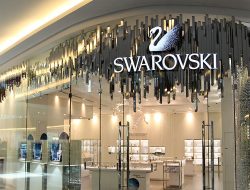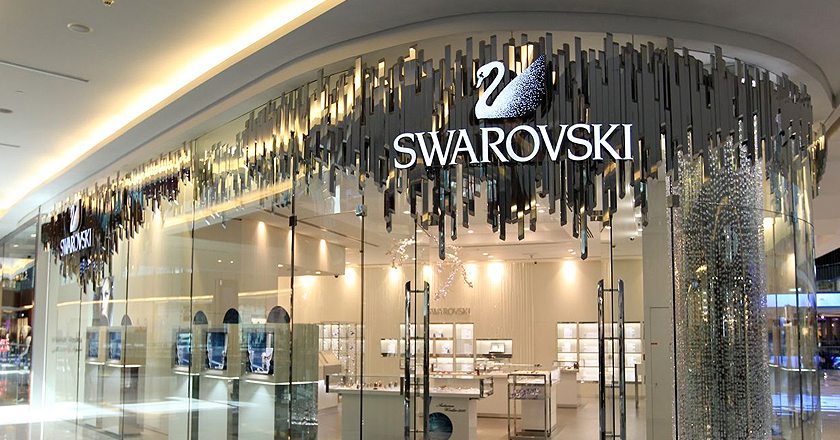Swarovski Strategy And Marketing Mix – Daniel Swarovski was born in 1862 in the Bohemia region of Austria-Hungary (now the Czech Republic). His father was a glass cutter and Swarovski apprenticed with him as a child. In 1892, Swarovski patented an electric cutting machine that could cut crystals more precisely than traditional methods.
Swarovski Strategy And Marketing Mix

swarovskijewelry – With this new technology, Swarovski was able to produce crystals that were brighter and more sparkling than anything ever before. The company quickly gained a reputation for its high-quality crystals and soon began supplying crystals to other jewelry manufacturers.
Swarovski is known for its innovative designs and commitment to quality. The Company’s crystals are used in a variety of products including jewelry, fashion accessories, home decor, and lighting.
Swarovski is also an important sponsor of arts and culture. The company has donated millions of dollars to various charities and has also commissioned artwork from some of the world’s most famous artists.
Swarovski crystals are also used in a variety of other industries, including architecture, lighting, and jewelry. The company’s crystals are renowned for their brilliance and brilliance and are found in some of the world’s most famous buildings and works of art.
Swarovski is well positioned for further growth in the future. The company has a strong brand, diverse products, and global presence. Swarovski is also committed to innovation and the company is constantly looking for new ways to use its crystals in new and creative ways.
Swarovski marketing strategy
Swarovski’s marketing strategy has evolved over time to reflect changes to meet consumer behavior and market trends. Here are some key elements of Swarovski’s marketing strategy:
Brand positioning refers to how a company positions its products or services in the minds of consumers compared to competitors. This involves identifying a unique value proposition that differentiates the brand from others in the industry and communicating it effectively through marketing efforts. For example, Swarovski could position itself as a luxury brand known for its high-quality crystals and precision craftsmanship.
Emotional branding focuses on creating emotional connections with customers through storytelling and experiential marketing techniques. By tapping into consumers’ desires, aspirations and values, brands can build strong emotional connections with their audiences. Swarovski uses its association with luxury, glamor and elegance to inspire a sense of prestige and exclusivity in its customers.
For example, Swarovski’s “The Sparkling Wish” campaign features heartwarming stories from customers sharing their happiest moments with Swarovski jewelry. This campaign encourages customers to share their stories, creating an emotional connection with the brand.
This strategy strengthens brand loyalty and makes Swarovski a brand that is more than just jewelry but part of special memories, which has a positive impact on customer loyalty and word of mouth.
Visual and in-store merchandising experiences:
Visual merchandising and in-store experiences play an important role in Swarovski’s marketing strategy as the company aims to create a luxurious and inviting environment where its crystals and jewelry are presented in an elegant and eye-catching manner. This strategy aims to attract customers, stimulate their senses and strengthen the brand image as a premium and sophisticated choice. Take an in-depth look at how Swarovski uses visual merchandising and store experiences to enhance its marketing efforts:
Store design and layout:
Swarovski’s physical branches are carefully designed with attention to detail. The store design is well planned to guide customers through the space and ensure they explore a wide range of product categories and collections. Strategic display and product placement ensures continuous flow and encourages impulse purchases.
Typical Crystal Displays:
Swarovski uses beautiful crystal displays in prominent locations throughout the store. These displays often feature crystal figurines or iconic statement jewelry from the brand. The use of ornate crystal chandeliers, large crystal elements, and eye-catching installations create an eye-catching appeal that immediately grabs customers’ attention.
Lighting and Environment:
Lighting is an important aspect of Swarovski’s visual merchandising. To enhance the brilliance and brilliance of the crystals and make them more visually appealing, special lighting techniques are used. Carefully designed lighting also creates a warm, inviting atmosphere and encourages customers to spend more time in the store.
Seasonal and Thematic Displays:
Swarovski often combines seasonal and thematic looks to suit specific celebratory occasions, holidays, or customized events. Collection. This display adds a touch of novelty and excitement, encouraging impulse purchases and encouraging customers to discover limited edition items.
Read also : Cara Membuat Konten Yang Baik Untuk Website
Product grouping and storytelling:
Swarovski groups products into visually appealing ranges, ensuring complementary elements such as matching necklaces and earrings are matched. This approach helps customers envision a harmonious set and drives increased sales. Additionally, strategic use of signage and product information tells a compelling story about the inspiration and craftsmanship behind a particular collection.
Interactive elements:
Swarovski integrates interactive elements into stores to engage customers and enhance the shopping experience when making a purchase. For example, some stores have digital screens or interactive touchpoints where customers can explore the history of Swarovski, watch videos about the crystal-making process, or learn about collaborations with designers and artists.
Swarovski Strategy Marketing
In-store events and Workshops:
Swarovski hosts events, workshops or in-store product launches to create excitement and excitement. These events offer customers the opportunity to interact with brands, participate in exclusive experiences, and gain insight into the latest collections or design trends.
In short, Swarovski’s focus on visual merchandising and store experience is a strategic marketing approach aimed at creating an emotional connection with customers, enhancing brand perception, and driving engagement and loyalty. By combining elements of beauty, elegance and interactive elements, Swarovski creates an enchanting shopping experience that keeps customers coming back and enhances the sense of prestige and sophistication associated with its brand.
Celebrity collaborations:
Celebrity collaborations are a marketing strategy that Swarovski uses to reach a wider audience and Strengthen your brand image. By partnering with celebrities, Swarovski can tap into the celebrity’s fan base and reach people who previously had no interest in the brand.
Limited editions and collections:
Limited editions and collections are marketing strategies that Swarovski uses to create a sense of exclusivity and stimulate demand for its products. By offering limited edition products, Swarovski creates a sense of scarcity that increases the likelihood of purchase. Collectibles, on the other hand, are designed to be collected, providing long-term value.
Digital Marketing and Engagement:
In recent years, Swarovski has taken steps to modernize its image; The focus is now shifting to attracting a younger, more digitally savvy demographic.
Influencer campaigns
Influencer marketing seems to have gained popularity among brands, and is proving to be effective despite some challenges in the industry. According to research conducted by Linquia, 51% of marketers surveyed admitted that influencer content consistently outperforms brand-generated content, especially when it comes to generating positive engagement with new customers.
One of the main benefits of influencer marketing is the ability to reach a larger audience and grow in size. Influencers have the ability to create and share content on a much larger scale than any brand could manage alone.
In-store technology
In 2017, Swarovski took a significant step towards improving its digital strategy by creating an “innovation lab” focused on the use of retail technology.
Successful applications of this technology include augmented reality (AR) applications that allow users to “try on” various pieces of jewelry virtually, providing customers with an immersive and interactive experience. Additionally, Swarovski has integrated AI-based image recognition software into its repair department to simplify and speed up the repair process.
Omnichannel approach and personalization:
Omnichannel approach:
An omnichannel approach is a marketing strategy that aims to provide a seamless and integrated customer experience across multiple channels and touchpoints. This ensures customers can interact with the brand consistently and conveniently, whether shopping in a physical store, browsing a website, using a mobile app, or interacting on social media. Here’s how Swarovski is taking an omnichannel approach:
Swarovski maintains consistent branding, messaging and aesthetics across all channels. Whether customers visit a store, website or social media page, they experience a cohesive brand identity that highlights the luxurious and sophisticated nature of Swarovski products.
Swarovski integrates its physical stores with digital platforms to provide a unified shopping experience. Customers can browse products online and then visit a store to make a purchase, or vice versa, enjoying the convenience of seamlessly switching between channels.
Personalization:
Personalization is a marketing strategy that tailors products, recommendations, and content to Customers’ specific individual needs and preferences. Swarovski uses personalization to provide more meaningful and relevant experiences to its customers:
Swarovski uses data-driven algorithms to analyze customer behavior, purchase history and preferences. They can use this data to provide personalized product recommendations and offers, increasing the likelihood of converting browsing customers into buyers.
Swarovski offers a customization service that allows customers to create personalized jewelry by selecting specific crystal colors, engraving messages, or selecting unique designs. This approach increases the sense of ownership and emotional connection to the product.
Swarovski customizes its email marketing campaigns based on customer segmentation. They send personalized offers, promotions and content tailored to individual interests, driving higher open and engagement rates.
Swarovski’s loyalty program rewards members with exclusive benefits, personalized discounts and early access to new collections. This personalized treatment drives customer loyalty and repeat purchases.

